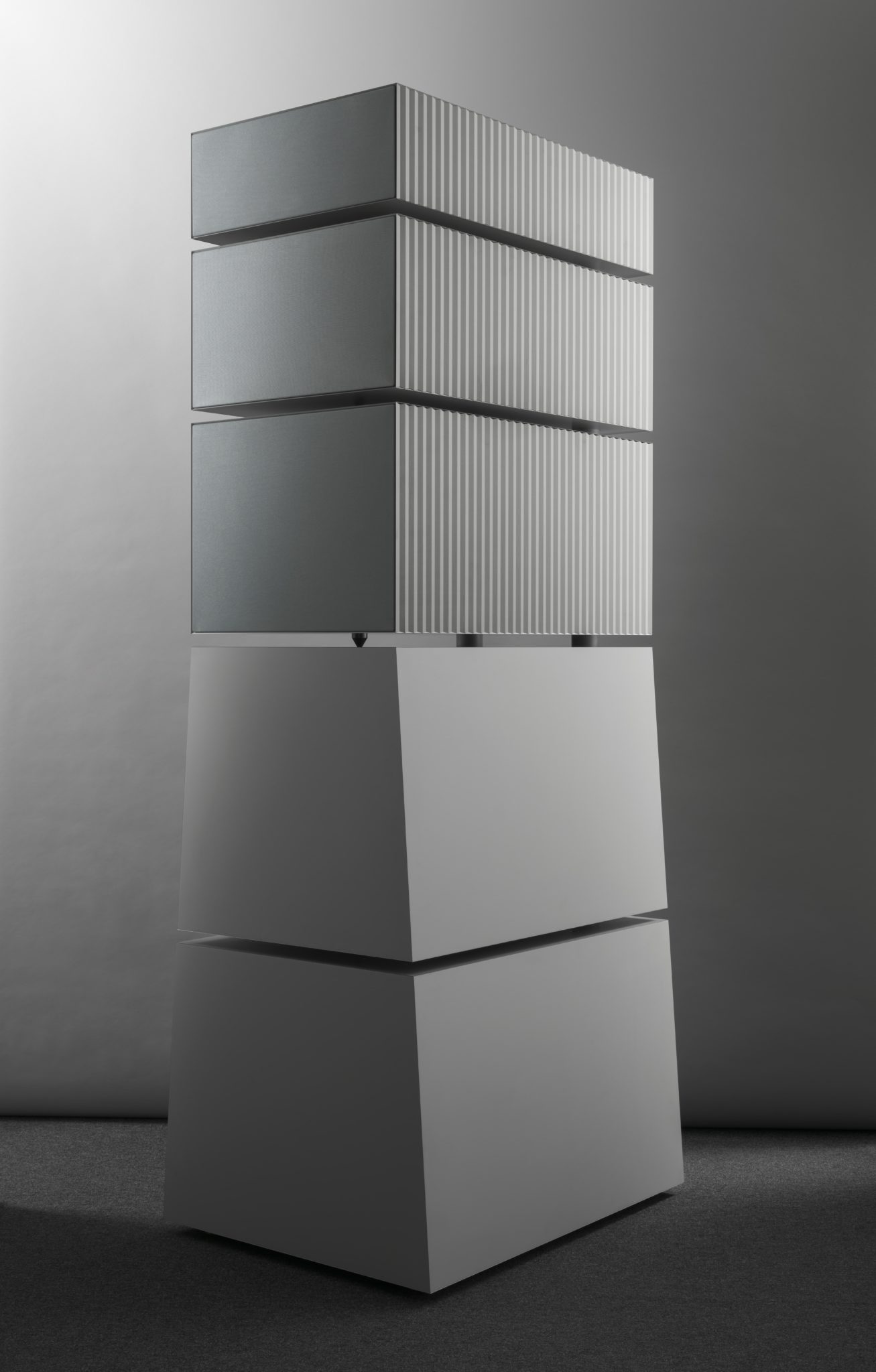
French designer Cécile Barani has collaborated with Swiss audio brand Goldmund to imagine and design the brand’s next speakers. With an innovative eye, the designer opened up in an interview to tell us about her working method and her different inspirations when designing these latest pieces.
What does design, and more specifically product design, means to you?
Design is a discipline that invites us to constantly question the objects that surround us. Questioning the use, function, form, and materials used. Each project has its own singularities and restrictions that lead to a specific response. Being a designer means knowing how to balance several factors (technical constraints, functions, use, materials, etc.) in order to offer a functional and neat object. Put yourself at the service of the project and understand its logic to better push its limits.
What is your background? (studies, previous work, passions, …)
Following my studies in industrial design at the Royal Academy of Fine Arts in Copenhagen, I completed a master’s degree at the School of Art and Design of Saint-Etienne in France, from which I graduated in 2016 with a Superior National Diploma of Plastic Expression, majoring in design. Since the opening of my Parisian studio in 2018, I have been designing specific pieces of furniture for architectural projects and have been collaborating with industrial firms: stairway and furniture (Rafic Hariri memorial in Beirut), wine tasting table ( Videlot establishment, in Bordeaux), door handles ( Institut de France in Paris), office deployment ( Nice), reception bank ( Arles School of Photography – Army Museum in Paris), magistrates’ seats and tables ( Court of First Instance in Aix-en-Provence), bespoke furniture ( Mediatheque, Beausoleil), urban furniture (Saint-Géraud Archaeological Site in Aurillac).
Why did you become a product designer?
Born to an architect father and a scenographer mother, I was immersed in a culture close to design, which instilled in me the necessary requirements to get off the beaten track (conventional solutions). This rigour gradually led me to find solutions where I pointed out a problem.
Who are your biggest influences?
The work of designers, artists, and architects like Charlotte Perriand, Jean prouvé, Pierre Chareau, Donald Judd and the Bouroullec brothers has guided me throughout my career. However, one person has truly influenced and shaped my views and approach to design: Martin Szekely. His work, which constantly pushes the physical properties of materials, lies on the border between design and engineering. His rigorous research and experimentation lead to an unparalleled precision in his projects: nothing is left out, everything is essential. His close collaboration with artisans encourages him to push the limits of the project and challenge everybody’s know-how. This requirement and this multidisciplinary working method influence me on a daily basis.


How do you go about your creative and work process?
In each project I am entrusted with, I always start by analysing and prioritising the given constraints. They are the foundation of the project. From this work a number of elements emerge which together form a toolbox. This toolbox helps me to explore various solutions in order to find a balance between function and form.
This research phase is a back and forth between drawing, model and 3D modelling. The model allows us to verify the relationship of the object with the space and the body. Once the concept has been approved by the whole team, a phase of adjustment and development of details follows. This multidisciplinary exchange enriches the project to produce the best possible result.
What inspired you to build Gaïa? And Pulp? What does your design aim to say?
It was in this spirit that I began my collaboration with Goldmund.
The cornerstone of the Gaïa and Pulp projects is the company’s know-how: high quality sound. The challenge I faced was to find the right balance between the immaterial presence of the sound and the physical presence of the loudspeaker. At Goldmund, the sound and technical efficiency of the speakers is ensured by the use of aluminium, which is why we developed Gaïa and Pulp using this material.
What main challenges were you faced with for designing Gaïa? And Pulp?
Gaïa is impressive. These loudspeakers initially responded to several technical problems such as the requirement for a large volume of air to be distributed in 5 enclosures and the need for a specific listening height for each loudspeaker. I felt that the visual aspect of the speaker should not take precedence over the listening experience, even if its appearance is disconcerting and intriguing. Perceived as a monochrome monolith, by means of invisible assemblies, the loudspeaker stands in the space like a totem pole. It is only by listening to it that it takes on its full meaning, a showcase that would disclose a jewel, a tonal jewel.
The Pulp collection differs from Gaïa in its modularity and size. Designed as a family of pieces to be displayed in space, it unfolds like a sound punctuation. Always with the aim of proposing a radical object, the elements are conceived as pure cylinders.
The special feature of these speakers is the swivelling textile part that hides all the technical elements. This system provides a 360° readable object that can be placed anywhere in the space. For purist, the textile can be rotated to offer a direct listening.
Could you tell us about your collaboration with Goldmund?
Working with Goldmund means stepping into a very complex world where discipline and precision are absolute. From this collaboration emerged two unique projects that stand out in terms of their looks while keeping in line with the company’s own materials and shapes



